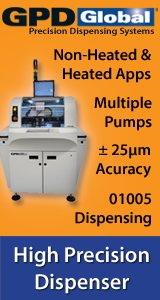Printed Circuit Board Assembly & PCB Design Forum
SMT electronics assembly manufacturing forum.
- SMTnet
- »
- Electronics Forum
- »
- Dual lane vs. single lane feeders for high mix
Dual lane vs. single lane feeders for high mix
Views: 4605
![]() Some pick and place machine manufacturers offer dual lane fe...
- Dec 11, 2017
by
DeanM
Some pick and place machine manufacturers offer dual lane fe...
- Dec 11, 2017
by
DeanM
![]()
![]()
![]() I would stay away from dual line feeders.
They make change...
- Dec 12, 2017
by
Tsvetan Usunov
I would stay away from dual line feeders.
They make change...
- Dec 12, 2017
by
Tsvetan Usunov
![]()
![]()
![]() Single feeders will always be your top choice. Any kind of p...
- Dec 12, 2017
by
Evtimov
Single feeders will always be your top choice. Any kind of p...
- Dec 12, 2017
by
Evtimov
![]()
![]()
![]() A lot of it depends on what machines you are using and how w...
- Dec 12, 2017
by
dwl
A lot of it depends on what machines you are using and how w...
- Dec 12, 2017
by
dwl
![]()
![]()
![]() Another aspect is the maintenance and repair of the feeders....
- Dec 13, 2017
by
Evtimov
Another aspect is the maintenance and repair of the feeders....
- Dec 13, 2017
by
Evtimov
![]()
![]()
![]() DeanM,
What make/model of machines are you considering? A...
- Dec 13, 2017
by
dwl
DeanM,
What make/model of machines are you considering? A...
- Dec 13, 2017
by
dwl
![]()
![]()
![]() As mentioned above, Mycronic and Europlacer seem to be desig...
- Dec 13, 2017
by
DeanM
As mentioned above, Mycronic and Europlacer seem to be desig...
- Dec 13, 2017
by
DeanM
![]()
![]()
![]() > "I would expect that any intelligent feeder
> enab...
- Dec 14, 2017
by
Spoiltforchoice
> "I would expect that any intelligent feeder
> enab...
- Dec 14, 2017
by
Spoiltforchoice
![]()
- SMTnet
- »
- Electronics Forum
- »
- Dual lane vs. single lane feeders for high mix







